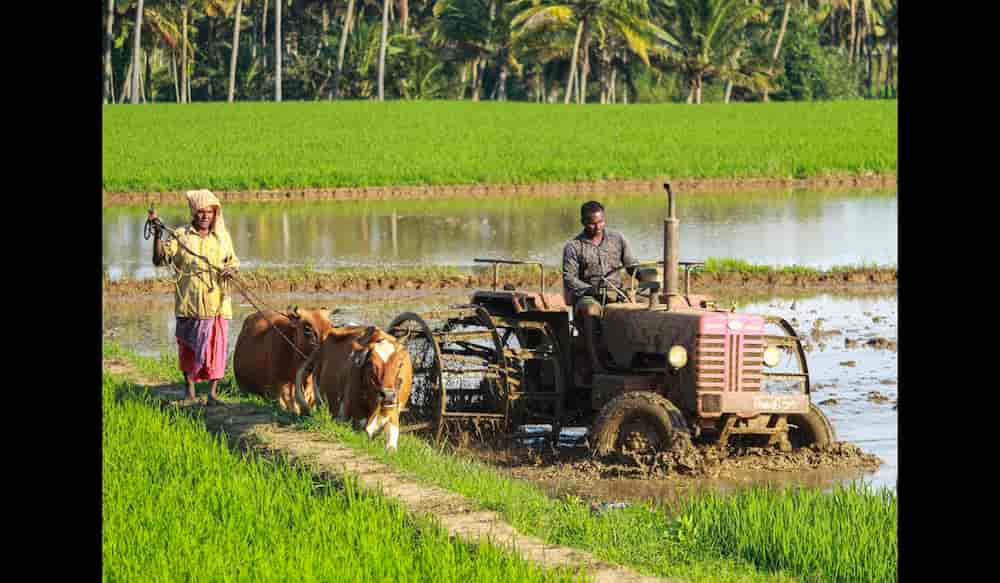
Farming in India has undergone significant changes in recent years, with the increasing use of machines and automation to support manual labour. While machine-powered agriculture has many benefits, such as increased efficiency and reduced labour costs, it also raises questions about the future of manual work in the sector.
In this article, we will compare the pros and cons of manual labour and machine-powered farming in India, exploring the impact of automation on farmers, workers, and the economy. This will provide a comprehensive overview of the challenges and opportunities presented by adopting machine-powered farming in India and help us understand the future of agriculture in the country.
Advantages of machine-powered farming
Machine-powered farming has several benefits that make it a desirable alternative to manual labour in India.
- Firstly, it increases efficiency and productivity, allowing farmers to cultivate more land in less time.
- Secondly, it reduces labour costs, as machines require fewer workers to operate, reducing the overall cost of production. A tractor trolley can replace 5 labours, reducing labour costs for you.
- Thirdly, machines can work in adverse weather conditions, reducing the impact of droughts, floods, and other natural disasters on farming operations.
- Fourthly, machine-powered farming can increase crop yields and improve the quality of products, as machines are more precise in planting and harvesting crops.
These advantages lead many Indian farmers to adopt machine-powered farming, contributing to the sector’s growth.
Disadvantages of manual labour
Manual labour in Indian agriculture has several disadvantages, making it a less desirable option for farmers:
- Manual labour is time-consuming and labour-intensive, reducing the efficiency of farming operations.
- It is also physically demanding, leading to injury and burnout among workers.
- Manual labour is vulnerable to the impact of natural disasters. In droughts, floods, and extreme heat can cause crop damage and reduce yields.
- Manual labour is often associated with low wages and poor working conditions, leading to a shortage of workers in the sector.
- Manual labour can be less precise and accurate, leading to crop damage and reduced yields.
These disadvantages are making manual labour a less desirable option for Indian farmers. They are driving the adoption of machine-powered farming.
The impact of automation
One of the key challenges of machine-powered farming in India is the cost of acquiring and maintaining the machinery.
- Firstly, the cost of buying and importing farm machinery is often prohibitively high for many Indian farmers, especially small-scale farmers.
- Secondly, the cost of maintenance and repair can be expensive, especially in rural areas where access to technicians and spare parts can be limited.
- Thirdly, farmers need more awareness and technical knowledge, making it easier for them to operate and maintain farm machinery effectively.
- Fourthly, the cost of fuel and electricity needed to run the machinery can also be a challenge, especially in remote rural areas with limited access to energy.
These challenges must be addressed to make machine-powered farming more accessible and affordable for Indian farmers. There are affordable implements to prefer as well, such as the Preet harvester.
The role of the government
Another challenge of machine-powered farming is the impact on employment and traditional farming practices.
- Firstly, the use of machinery can lead to decreased job opportunities for manual labourers in the agricultural sector.
- Secondly, it can also impact the traditional agricultural practices and knowledge passed down through generations.
- Thirdly, the use of machinery may also lead to a decrease in the diversity of crops grown and a decrease in the overall quality of crops produced.
- Fourthly, machine-powered farming may also lead to soil degradation and other environmental problems due to the overuse of chemical fertilisers and pesticides.
It is important to adopt sustainable farming practices to mitigate these challenges. In addition, considering the impact of machine-powered farming on employment and traditional farming practices is also important.
The future of manual labour
Finally, the cost is a major factor in adopting machine-powered farming in India.
- Firstly, the cost of purchasing and maintaining machinery is significantly higher than that of manual labour.
- Secondly, additional costs may be associated with training farmers and farm workers to operate and maintain the machinery.
- Thirdly, the cost of inputs such as fuel, spare parts, and maintenance may also be higher for machine-powered farming.
- Fourthly, additional costs may be associated with the disposal of machinery and its parts at the end of its life cycle.
It is important for farmers to carefully consider the financial implications of adopting machine-powered farming to address these cost challenges. Seeking out government and private sector support for purchasing and maintaining machinery is also something you can do.
Conclusion
To conclude, manual labour and machine-powered farming have pros and cons in Indian Agriculture. While manual labour offers flexibility and adaptability, machine-powered farming provides efficiency and consistency. Both have unique roles to play, and it is important to understand their strengths and limitations. Ultimately, the choice between manual labour and machine-powered farming depends on the farmer’s and the farm’s specific needs. In the end, both methods can coexist and complement each other to boost Indian Agriculture.
My name is Rahul Saini & I am a content writer at d. I like to write about Agriculture, Automobiles and General industries.